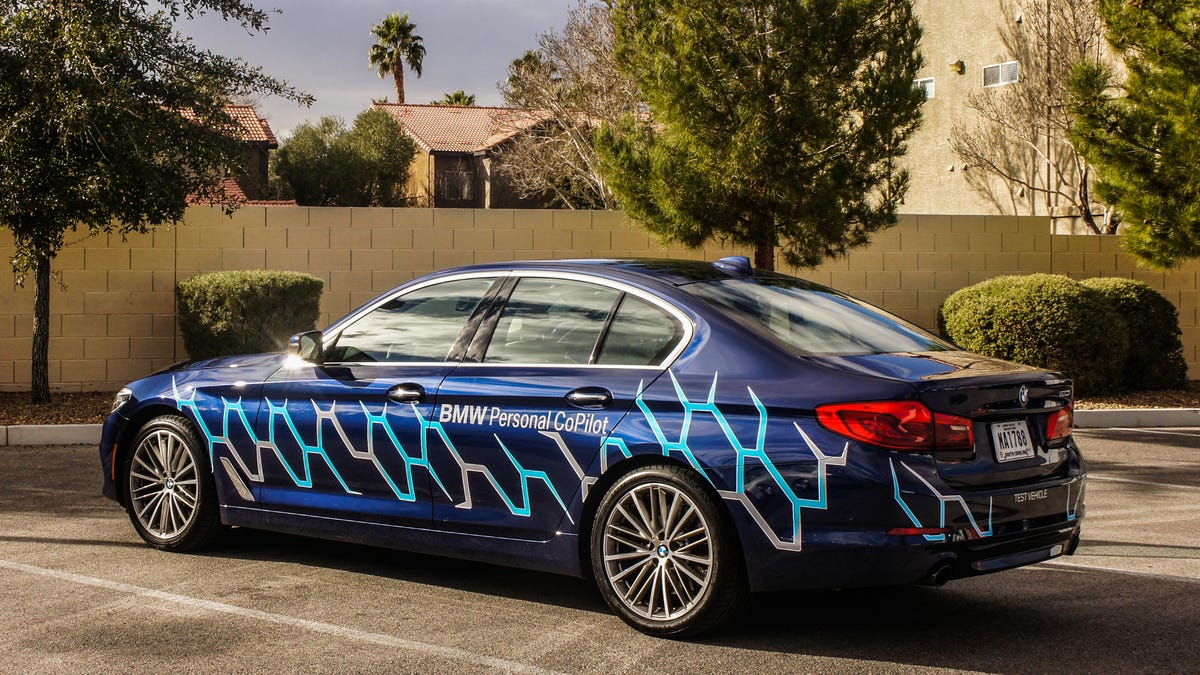What to do while riding in a highly-automated BMW car
BMW presents a look into the future of riding in cars when you don't have to drive, aided by Microsoft Cortana as a virtual assistant.

Although some people fumble with a phone while driving, there isn't much you can, or really should, do besides hang onto the wheel and try not to hit anything. At CES , however, BMW imagines a world where a self-driving car enables many other activities, from shopping to making a restaurant reservation, and even to having the car give you a guided tour of your surroundings.
To experience this dream of the future, I got in the driver's seat of a BMW 530, modified to include Personal CoPilot, BMW's highly-automated driving feature, advanced gesture control and a connection to Microsoft Cortana. All of these features remain in development for now, although BMW implemented limited gesture control in its newest 7- and 5-series models.
BMW demonstrates highly-automated driving, which it calls Personal CoPilot, in a 5-series sedan at CES.
With a BMW staffer in the passenger seat, I drove the car onto a Las Vegas freeway, at which point he instructed me to hit a blue button in the car, then take my hands off the wheel and feet off the pedals -- while cruising among other traffic both above and below our speed of 65 mph.
My lack of control didn't pose a problem, as BMW's Personal CoPilot, its next step in driver assistance features, took over. Combining advanced forms of adaptive cruise control and lane keeping assist, Personal CoPilot maintained my set speed, until it had to slow for traffic ahead, and held to a steady path down the lane without ping-ponging between the lines.
When a Fiat made a quick and close lane change in front, the BMW calmly braked, handling the situation better than most humans would.
With Personal CoPilot active, the BMW's LCD showed a tile with images of places and buildings we passed. I had merely to gesture with my thumb over the car's console, and the LCD showed information about whichever image it currently had up. With a pointing gesture, I could make the car read out the information, acting as my tour guide. A swipe right brought me back to the main menu.
Activating voice command in the car, I was treated to Microsoft Cortana, giving me access to all of its cloud-based services, neatly integrated with the car. For example, asking Cortana to find a nearby restaurant, options appeared on the BMW's display, complete with thumbnail images and more detailed information so I could make a choice to my liking. Using more gesture control, I was able to scroll through selections and make a reservation.
BMW's LCD changes its screen dynamically if you put the car in highly-automated mode, showing options that don't require attention to the road.
Trusting in the car's driving ability, I found it freeing to interact with the features BMW made available. Enjoying the view out the windows, with contextual information provided by the car, or delving into restaurant option seemed like a glimmer into all the things we will be able to do when the car can handle the driving.
Of course, rather than self-driving, Personal CoPilot is currently what BMW calls highly-automated, able to maintain speed and lane position on a freeway or highway, but requiring the driver to take manual control for off-ramps and city driving. However, a feature such as this could be implemented in cars far ahead of the 2021 timeline BMW and other automakers set for full self-driving.
And connecting to cloud services, such as Microsoft's Cortana, seems a sure bet for both human-operated and self-driving cars of the near future. Some automakers, like Ford, recently announced Amazon Alexa integration.
A BMW spokesperson said that some of the features I saw in Las Vegas could find their way into production cars within the next two years.

